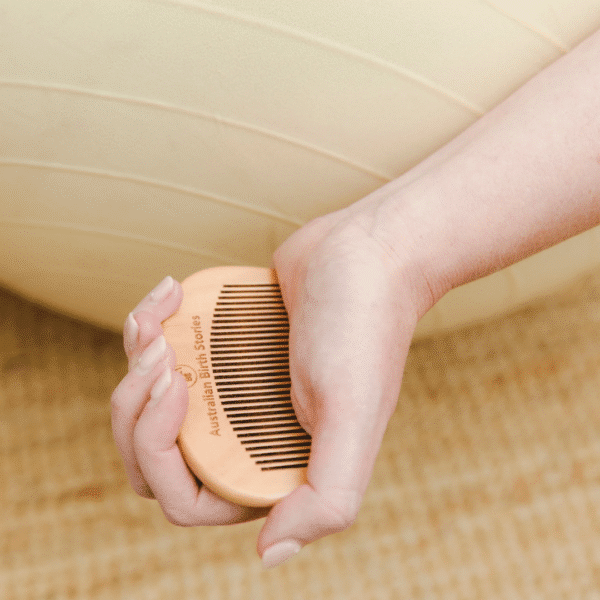Birth Epidural for Labour and Birth: Benefits, Risks and What to Expect
Epidural for Labour and Birth: Benefits, Risks and What to Expect

Today we'll cover what you need to know about the procedure, timing, benefits and risks of epidural pain relief to help inform your birth choices.
Epidural Pain Relief in Labour: A Complete Guide
**Reading Time**: 8 minutes
What is an Epidural?
An epidural can be a helpful pain management tool, especially if you have a long, hard labour and you’re feeling tense and overwhelmed. In this instance, an epidural can allow you to rest so you can gather energy for the pushing stage. If you’re finding it difficult to relax despite embracing breathing practices, movement and gas and air, an epidural can offer you physical rest and mental space so that you can continue labouring calmly, which may prompt your cervix to dilate and your pelvic floor to relax.
Understanding How Epidurals Affect Labour
An epidural can slow down labour. Oxytocin works as part of a positive feedback cycle – the strength, intensity and pain of your contractions triggers the release of more oxytocin, which prompts more contractions. When you stop feeling that pain and you’re no longer feeling that trigger, the oxytocin levels drop and contractions may slow down or stop. Furthermore, because movement and gravity are taken away with an epidural, your baby’s head isn’t pressing as firmly on your cervix, hence there’s less pressure and slower contractions.
Preparing for an Epidural
Before the procedure:
- You’ll need to wait for an anaesthetist (potentially up to an hour)
- A cannula will be inserted for IV fluids
- You’ll receive normal saline to manage blood pressure
- A urinary catheter will be inserted after the epidural
The Epidural Procedure
The procedure involves:
- Sitting on the edge of the bed
- Cleaning your back with antiseptic
- Curling over a cushion to curve your spine
- Staying still during contractions
- Receiving local anaesthetic
- Inserting a thin tube into the epidural space
- Administering anaesthetic and fentanyl
After the Procedure
- Numbness from bellybutton down
- Possible maintenance of some sensation
- Unable to stand or walk
- Ice test to check effectiveness
- Access to a controlled analgesic pump

Timing Your Epidural
You can request an epidural upon admission to the birthing unit, though it may be too late if you’re nearing transition.
Consider:
- Trying non-pharmacological pain relief first
- Understanding these methods have fewer risks
- Knowing they’re less likely to slow labour
- Discussing timing with your midwife
Benefits of Having an Epidural
An epidural can provide:
- Excellent pain relief
- Opportunity to rest during long labours
- Relief from exhaustion and fatigue
- Potential help with cervical dilation if you’re tense
- Options for side-lying positions with peanut ball support
Understanding the Risks
Key considerations include:
- Potential blood pressure drops affecting baby
- Limited birthing positions
- Longer pushing phase
- Increased likelihood of instrumental birth
- Possible need for synthetic oxytocin
- Risk of severe perineal trauma
Making an Informed Choice
Consider:
- Your birth preferences
- Labour progression
- Energy levels
- Available support
- Alternative pain relief options
Related Article:
– Pain Relief in Labour and Childbirth
Frequently Asked Questions
How long does an epidural last?
An epidural provides continuous pain relief through a pump system that you can control within safe limits.
Can I move around with an epidural?
Most women cannot walk after an epidural, but you can change positions with assistance and use tools like peanut balls for comfort.
**Important Note**: This information is for educational purposes only. Discuss your pain relief options with your healthcare provider.
Categories
Related Products
-
Birth Combs: Harness Your Body’s Natural Pain Relief
$24.95Crafted from smooth, natural wood, our birth combs activate specific pressure points in your hands that trigger your body’s innate pain-relieving responses.
Get your copy of our Perineal Massage Guide in your inbox
Keep Reading
We think you might enjoy these articles
@AustralianBirthStories
Follow along with us
@AustralianBirthStories
Follow along with us
@AustralianBirthStories
Follow along with us
@AustralianBirthStories
Follow along with us
@AustralianBirthStories
Follow along with us
@AustralianBirthStories
Follow along with us
@AustralianBirthStories
Follow along with us
@AustralianBirthStories
Follow along with us
@AustralianBirthStories
Follow along with us
@AustralianBirthStories
Follow along with us
@AustralianBirthStories
Follow along with us
@AustralianBirthStories
Follow along with us








